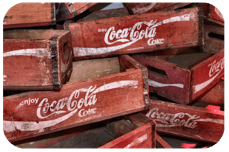Nearly ten years ago, soda seemed to be losing its appeal with consumers as public health campaigns warned against sugary soft drinks and schools took soda out of vending machines and off of lunch menus. After per-capita consumption of soda among Americans fell to a new low in 2015, Coca-Cola and Pepsi started expanding their product lines to include diet sodas, flavored water, and energy drinks. With so many healthy choices available, industry insiders began to assume that consumers who Continue reading








